Article
Our Approach to Mobile and Web App Development

There are 7.26 billion mobile users in the world, and more insights from Statista indicate just how important high-quality mobile apps (and effective mobile web development) are to reach them:
“During the second quarter of 2022, Android users were able to choose between 3.5 million apps, making Google Play the app store with the biggest number of available apps. The Apple App Store was the second-largest app store with roughly 2.2 million available apps for iOS. Whereas the exact number of apps may fluctuate as Apple and Google regularly remove low-quality content from their app stores, the number of apps has been steadily increasing over the years.”
The key factor here is quality in terms of both development and design. With fierce competition in the mobile app space, working with experienced, professional mobile app developers and designers is more important than ever.
But creating a native app for Android or Apple isn’t the only route forward. Web apps––apps “delivered over the Internet through a browser interface [that] do not need to be downloaded since they are accessed through a network”––are another viable option, and an opportunity to reach an even broader audience.
To access a web app, all a user needs is an internet connection and a supported browser, which opens the door to myriad business opportunities.
In this article, we’ll dive into:
- The components of mobile development
- The specifics of web app development
- What to consider when evaluating developers, and what makes Fresh different
By the end, we hope you’ll better understand why strategic mobile and web app development is so important, and be equipped to make decisions about what’s best for your business.
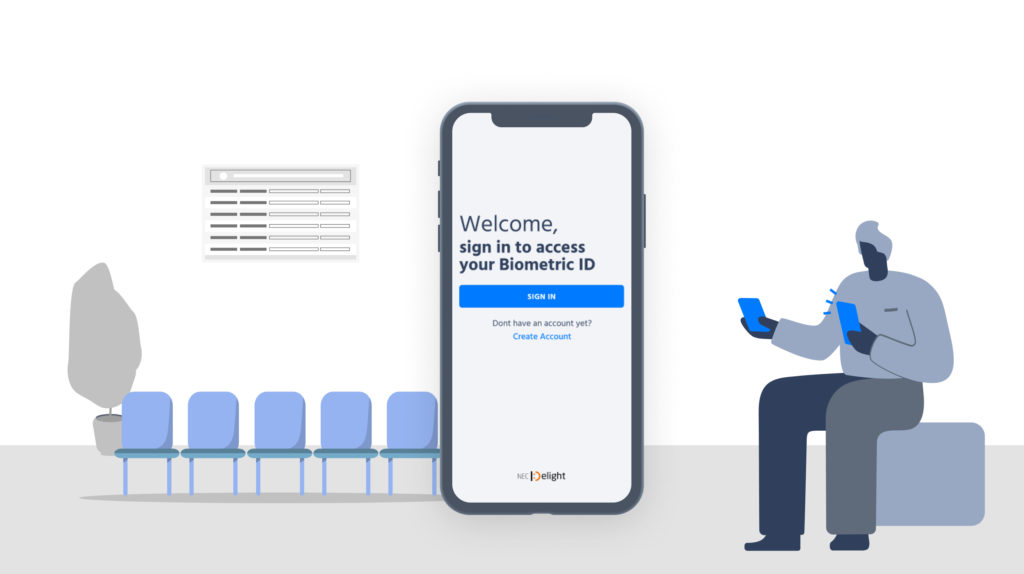
What is mobile app development and what makes it unique?
Fresh’s mobile app developers create products for a range of clients (and use cases), including:
- NEC: Airport travel is stressful in general, and in today’s world with things like social distancing in high-traffic places, a ‘touchless’ experience is essential. Partnering with NEC’s team, we created a biometrics-enabled (facial recognition) experience for seamless airport travel, streamlining things like traveler check-in, duty-free purchases, rentals, and wayfinding.
- Google: Showcasing the value of new technologies is essential when developing buy-in from potential users. Just a Line is a showcase for the potential of augmented reality (AR), and it highlights Google’s ARCore Cloud Anchors in the context of a drawing app.
- Adidas: An individual’s health journey encompasses much more than tracking steps or counting calories. Working with Adidas, we created All-Day, a science-based health and wellness app that connects users to influencer experts and allows them to build new habits that stick as a part of a supportive community.
- Harbor Wholesale: Inventory management and supply chain optimization in convenience stories are essential for successful operations. We worked with Harbor Wholesale to create Harbor Hub, a platform for store owners and suppliers to manage their inventory, access real-time data, and plan ahead.
- Navia Benefit Solutions: Insurance claims management is complex, so we partnered with Navia in the mobile web development process to streamline the process for users, developing a branded, user-friendly interface that decreases the number of steps required to make a claim.
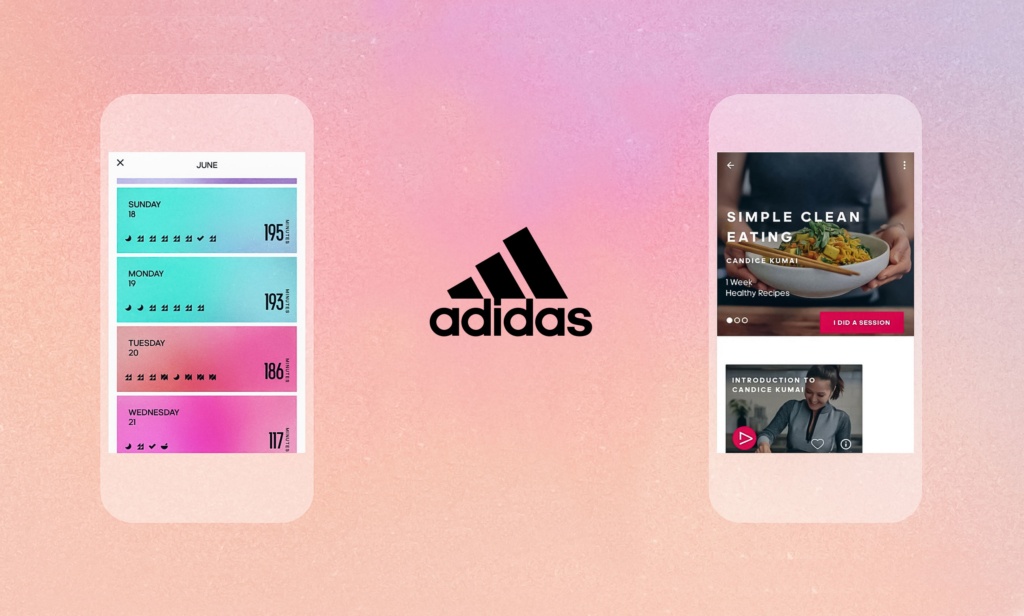
Our team delivers apps across a range of use cases by following a proven process. While each of the aforementioned examples required a custom touch, the underlying development methods are similar because mobile app development is rooted in the same principles and methods of traditional software development.
But although approaches to code management, QA, and testing are similar, one important difference is that mobile applications are created specifically to utilize mobile devices’ unique features. For example, a supply chain management app might be written to take advantage of a smartphone’s geolocator and be highly responsive, accessible on phones, tablets, and other devices.
One more point to consider: while there is no shortage of solutions in the market offering “low-code” and “no-code” development, development is more complex the dragging and dropping widgets. Even in instances that require less intensive custom software development, a variety of business, technology, and user-facing factors should be considered.
Bottom line, mobile app development is a complex undertaking. And in cases where the process of developing an app warrants a less customized approach, it’s still vital to think through the intricacies to stay on-time, on-budget, and deliver an app that generates value.
This requires knowledge about things like mobile strategy and UX, in addition to the best-in-class development tools needed to create effectively designed interfaces, clear functionality, highly performant apps.
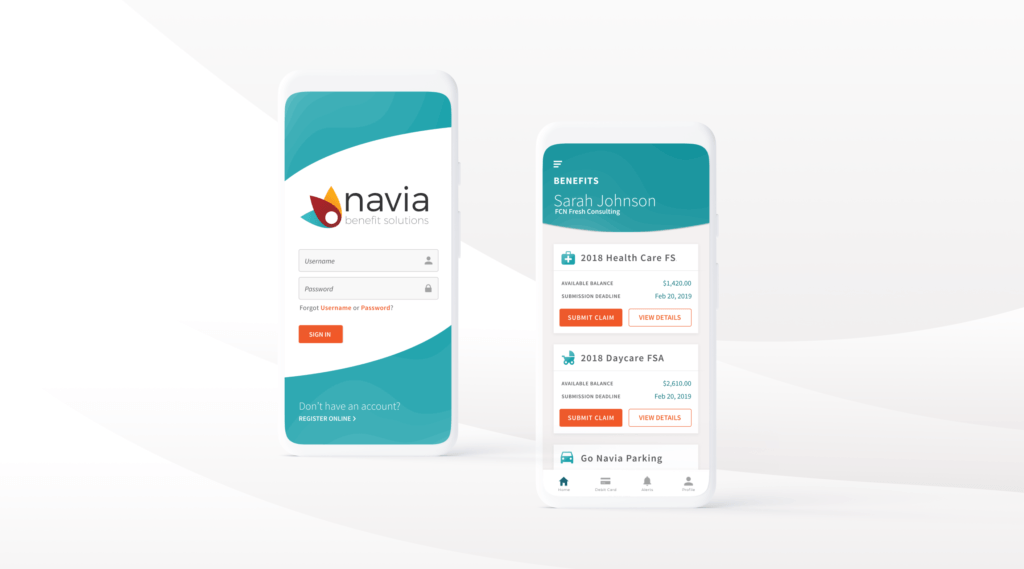
The components of mobile development
At Fresh, we don’t just build apps. As stated throughout the previous paragraphs, our team emphasizes customized consultation. Our goal is to help clients across a range of industries create the right app for their business needs and maximize their return on investment, and this requires diving deep into an organization’s unique challenges.
One of the first steps Fresh’s team of mobile strategy consultants, designers, and developers takes is helping clients choose the right tech stack and platform:
- Hybrid: Hybrid mobile app development is often less expensive than pure native development because it relies on a single code base. If you need an app that can run on multiple mobile platforms, we can provide the strategy and development talent to expedite your solution with compatibility across devices and OS ecosystems.
- Native: Native mobile apps are dedicated to a single operating system (OS), such as Android or iOS. If your workforce uses iPhones and iPads, developing for iOS makes sense; if you have an international audience that mostly leverages Android, developing for that native environment is something to consider. Fresh developers have expertise in programming languages such as Java, Swift, Kotlin, and Objective-C, which enables the team to optimize your mobile app for maximum performance on a specific OS, if the business case makes sense.
- Progressive web apps: Progressive web apps (or PWAs) are apps delivered through the web and built using a single code base via Javascript, HTML, HTML5, CSS, or CSS3. Because high-end progressive web applications look and feel like native applications, they’re indistinguishable to the end-user. If your dev team is versed in these languages and not in Swift or Java, then the PWA route might make sense from the standpoint of ongoing maintainability and scalability.

Whichever platform you develop for, our approach to mobile application development follows key stages, with room for customization depending on budget, timeline, or other unique requirements:
- Planning: The initial project management stage includes defining business rules and requirements, reviewing best practices, researching competitors, and discussing stakeholder/business expectations and KPIs. This is often called Phase Zero––“going slow to go fast” to define the problem and lay the groundwork upon which efficient work can be done.
- UI/UX design: This stage incorporates creating customer personas, developing task lists, creating design templates, brainstorming details around user interfaces and dashboards, and getting feedback on the current user experience of the app, if applicable.
- Front-end development: This stage involves the creation of prototypes and other user-facing elements, thinking critically about user interaction, and coding the front end.
- Back-end development: This stage includes developing APIs and the back-end architecture.
- Testing: In addition to functional, integration, and user testing, this stage includes extensive debugging.
- Deployment: This stage includes full deployment to app stores or whatever platform your team is using the launch the app.
- Maintenance and support: This stage includes backups, server monitoring, updates and upgrades, troubleshooting, and bug fixes.
- Market evaluation: This crucial stage combines customer feedback and rating workflows with analytics and A/B testing. Some amount of market evaluation happens during the planning phase (and throughout the other phases as well), but it’s essential to do ongoing strategy work to pivot and adapt to user needs.
Whether you work with Fresh or not, we recommend ensuring that your vendor of choice addresses the aforementioned phases. While low-code and no-code approaches do streamline development work, things like UX, technology architecture, and testing remain just as important.
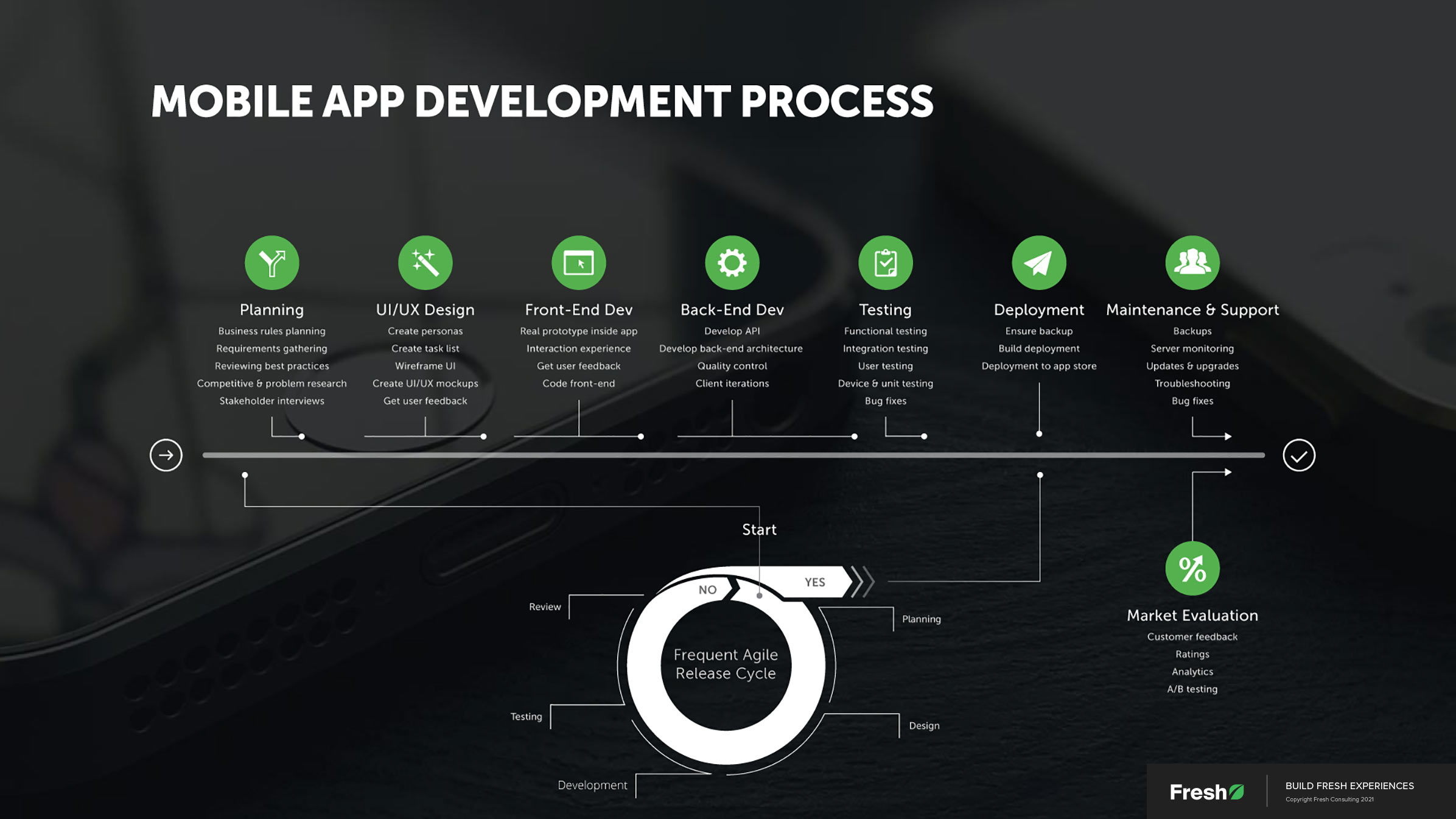
What is web app development and what makes it unique?
When it comes to web app development, we also work with a broad range of clients across a spectrum of industries:
- United Rentals: Robot Operational Control (ROC) addresses challenge factors in the construction industry, such as a diminished workforce and the need for automating time-consuming tasks. With web apps like ROC, full automation of complex worksites is possible.
- Ikonix: Our partner’s legacy application (for technicians to calibrate electrical safety instruments for consumer products) was dated. Fresh designers and developers stepped in to aid in Ikonix’s digital transformation and create a modernized cloud architecture.
- Payscale: The client’s data-heavy tool for helping consumers and businesses obtain accurate, real-time information on job market compensation required responsivity, security, and data integrity across a range of devices and technology ecosystems. Development involved not only coding the web app, but also thinking through strategic scalability.
- CBRE: The world’s largest commercial real estate services company had various digital applications affected by inconsistent technical architecture and design. Our team of designers and developers collaborated with their internal team to unify their suite of projects and create a platform for the future.
- Invent Value: Our team created a proprietary app for innovation, from the brand and visual elements to cloud integration and AI functionality. This end-to-end project highlights the complexity of web app development and the various considerations that go into creating a market-ready product.
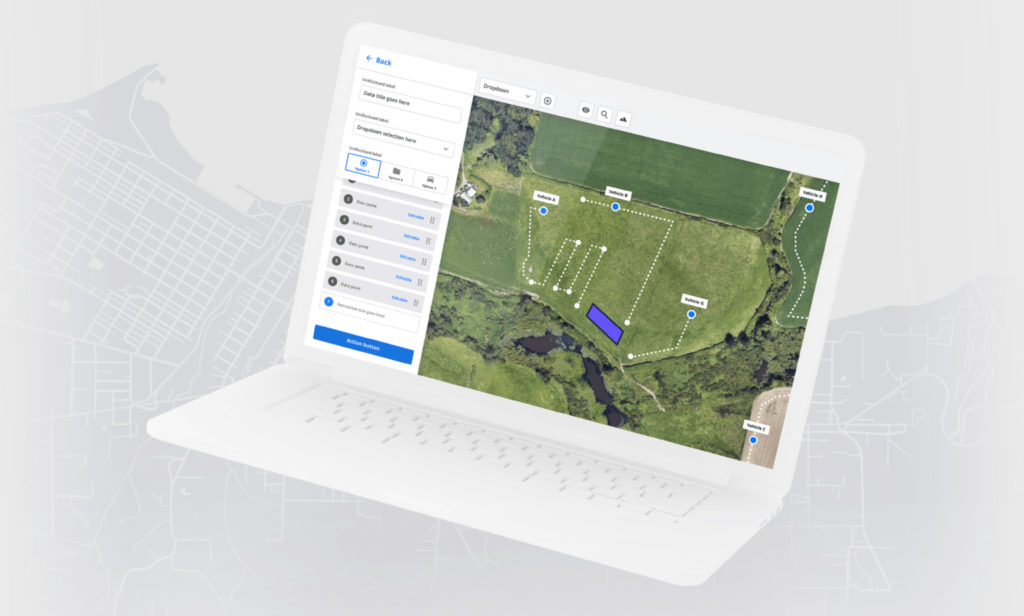
We have a rigorous approach to designing effective and efficient server-based tools built on quality code and designed for scalability. Leveraging software development kits (SDKs), APIs, and other tools allow us to build web apps accessible across a range of browsers, including Chrome, Safari, Firefox, and Opera.
But like mobile app development, the process is complex, and choosing a vendor that has a proven process is essential.
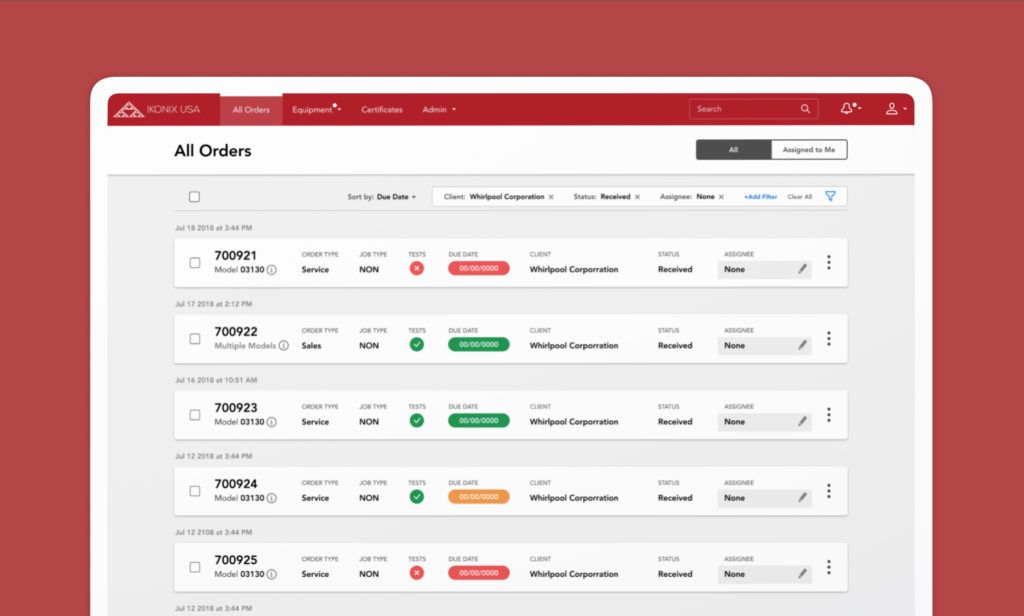
The components of web development
Our process for web app development includes the following. Notice the similarities between it and our mobile app development process:
- Planning: We focus on creating the web app’s architecture during this initial stage. We take time to consult with stakeholders and conduct research to gather requirements and plan business rules. This is similar to what we do when creating mobile apps––an initial “go slow to go fast” phase that creates the scaffolding for a successful project.
- Design: This crucial part of the web app development process includes UI wireframing, UX aesthetic mockups, clickable prototype wireframes, app task lists, and creating user stories.
- Development: Front-end experience development is key to this stage in the process, as is API development and back-end architecture development. We also conduct quality control and make client iterations as needed.
- Testing: The testing process involves many of the same elements mentioned in the mobile section. One specific consideration for web apps is browser and device testing.
- Deployment: Similar to mobile deployment––full deployment to browsers and other platforms.
- Maintenance and Support: Our maintenance and support services include backups, server monitoring, site monitoring, troubleshooting, and bug fixes.
There are numerous similarities between this and our approach to mobile app development, highlighting the roots of both processes in traditional software development. But the nuances––which are often identified in a planning / Phase Zero––are unique and important to understand.
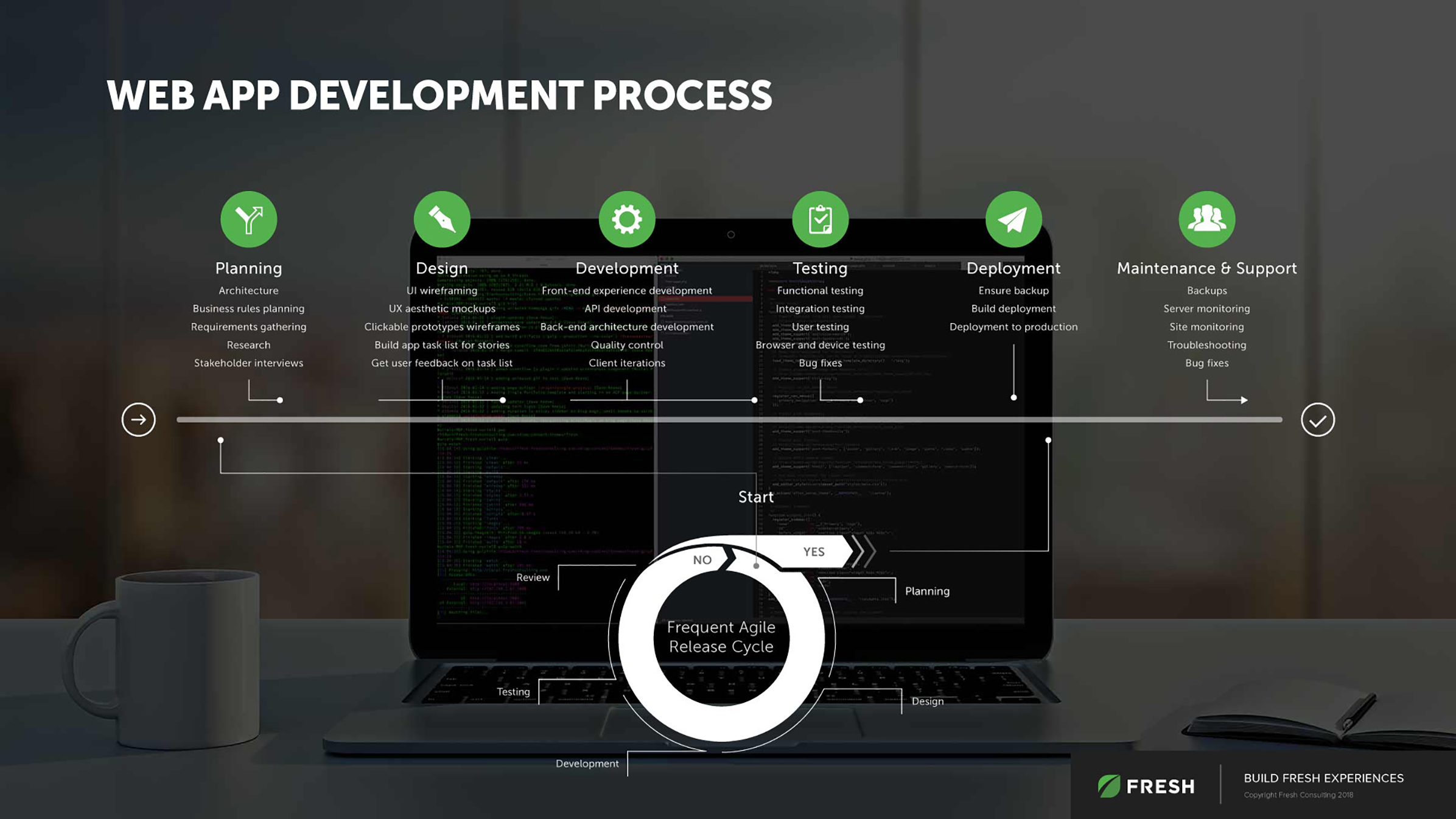
Why partner with a professional for mobile and web app development
Teaming up with a strategic partner for mobile and web app development has many advantages, including:
- Faster delivery: Many businesses lack the internal expertise and bandwidth to create a successful mobile or web app, despite the promise of no-code or low-code solutions. Going with a less customized approach isn’t wrong, it’s simply important to consider the intricacies of any type of development. Partnering with development experts at Fresh will provides a seamless development experience from concept to launch.
- Cost-effective: Partnering with our professional team can also save you money through development efficiency and on-time delivery. No-code and low-code services promise a more streamlined coding process, but app development requires much more than code, as stated previously. A partner that can manage the details makes sense for many clients.
- Quality assured: If you choose Fresh for your business needs, you can be certain that we will develop your mobile or web app to a high standard and that it will meet your users’ demands. Principle-driven software development is our pillar.
- Continual support: At Fresh, we offer ongoing support, allowing teams to fix problems quickly and minimize downtime, as well as work with a partner that understands the importance of scalability. We design, develop, and deliver, but we’ve developed ongoing relationships with most of our clients, which often manifests itself in continual support post-launch.

Build your mobile app or web app with our software development services
Mobile and web app development is a huge undertaking. Working with a professional team that’s done it before is an effective way to go to market successfully.
At Fresh, we’ve spent 15 years learning, refining, and growing, and this translates to direct value for our clients and partners. Connect with us today to find out more about how we can come together to expand your business reach across mobile browsers, mobile phones, web-based platforms, and much more.









